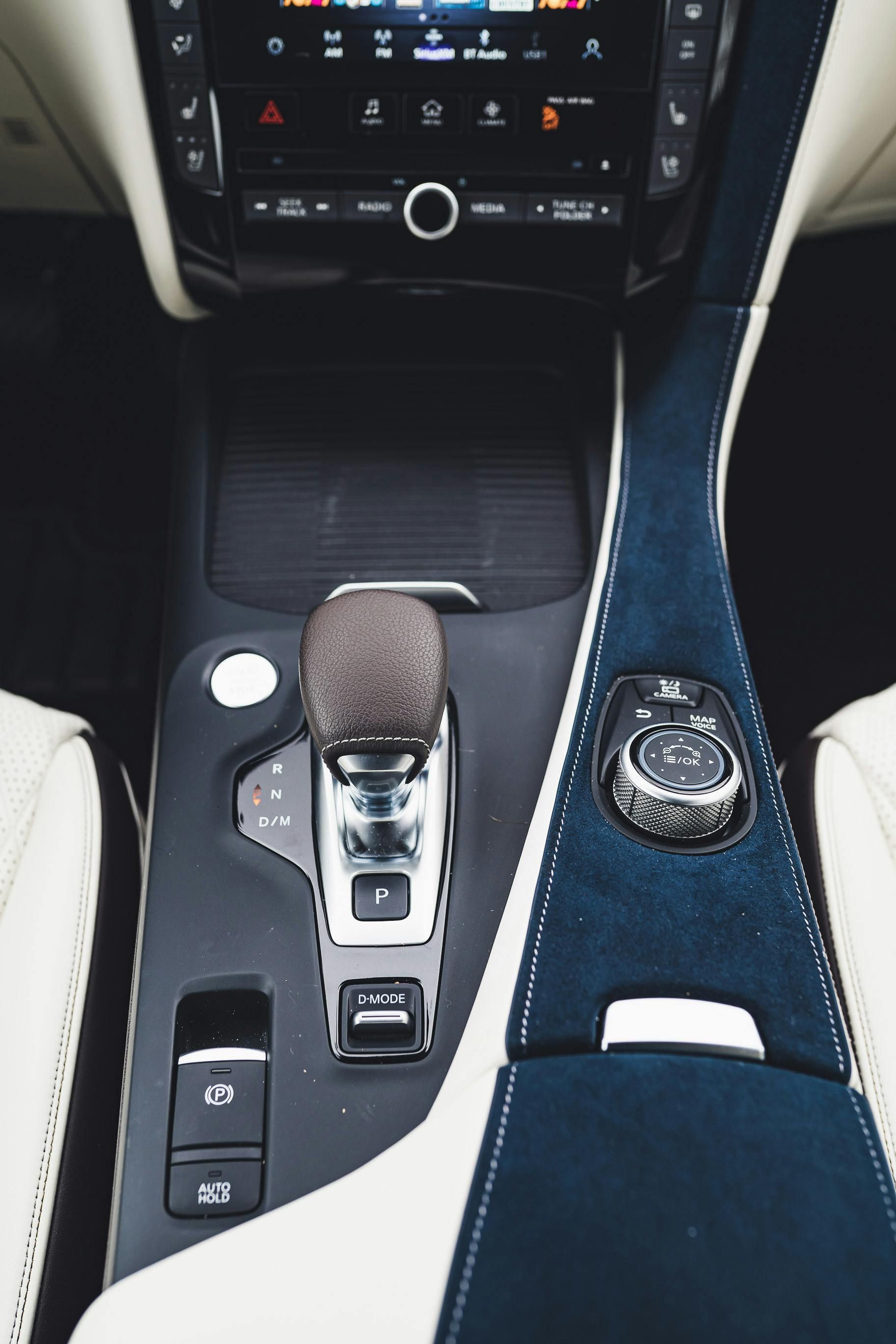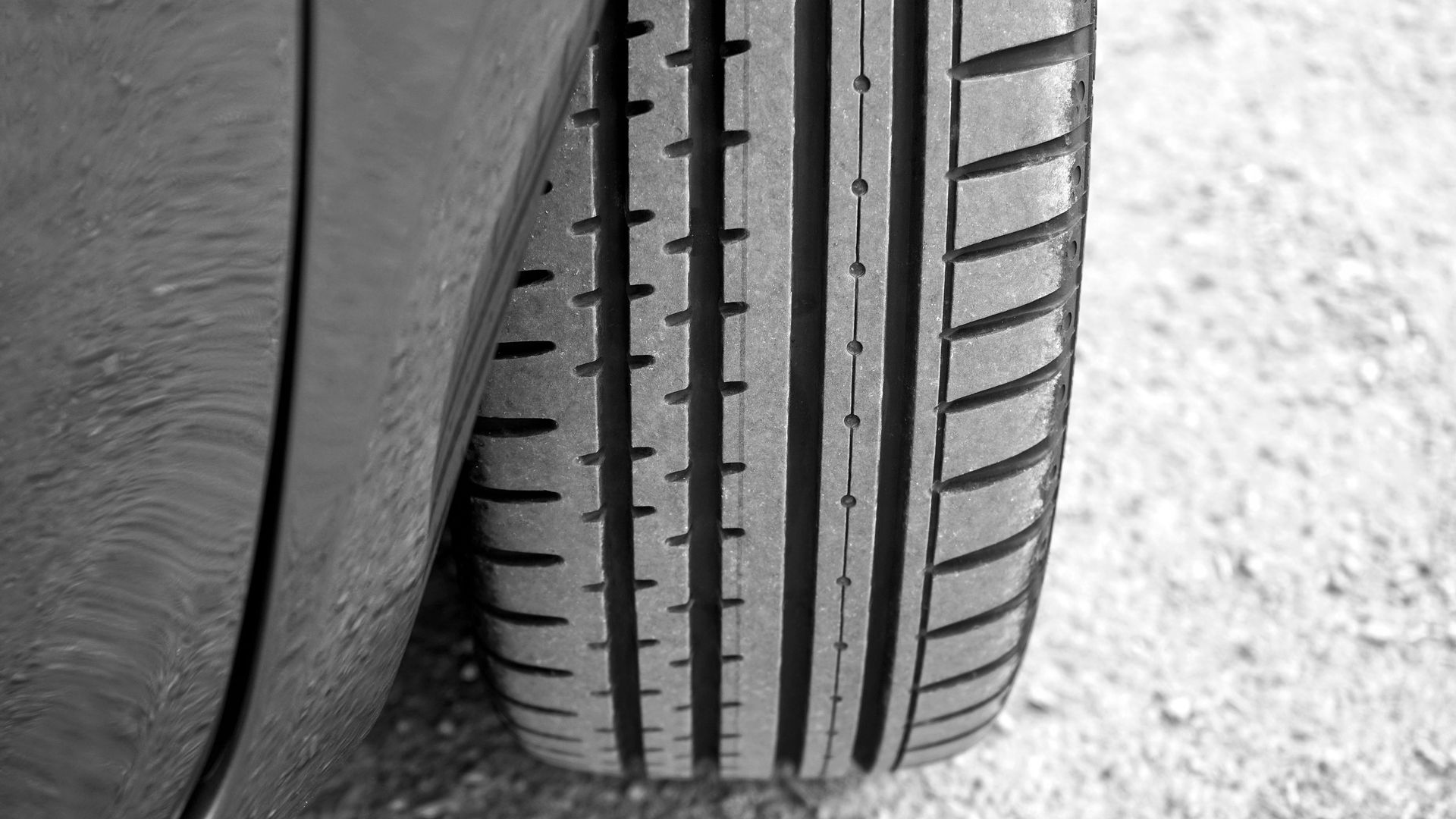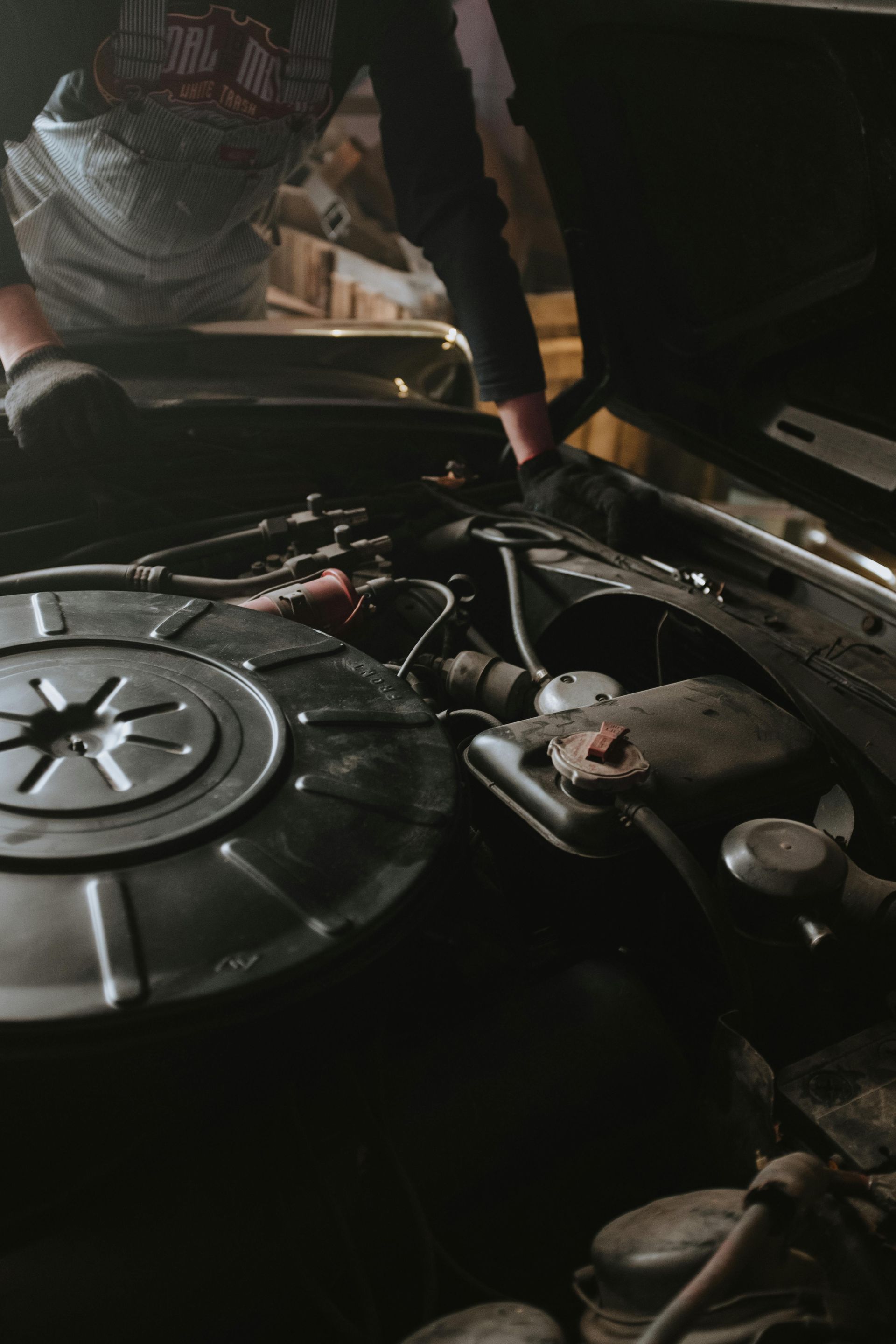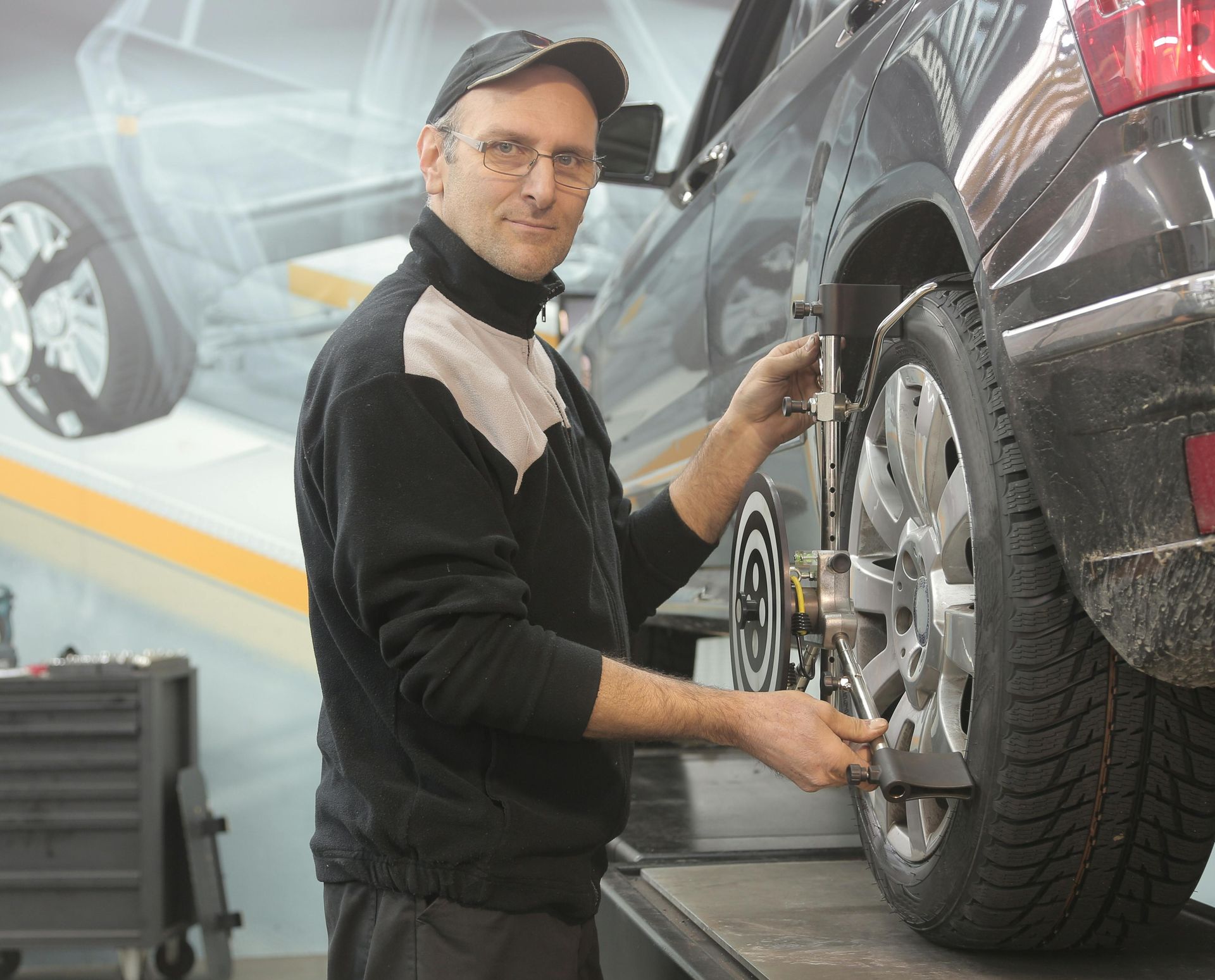How Wheel Alignment Issues Affect Your Steering and Suspension
Driving the winding roads around Woodstock, Georgia should feel smooth and controlled. But if your car pulls to one side, your steering wheel vibrates, or you're constantly fighting to keep your vehicle going straight down Main Street, you might be dealing with wheel alignment problems.
Wheel alignment issues don't just make driving uncomfortable—they can damage your tires, stress your suspension system, and create serious safety hazards, especially when navigating the hills and curves between Woodstock and the North Georgia mountains.
What Is Wheel Alignment?
Wheel alignment refers to how your wheels are positioned relative to each other and your vehicle's frame. When properly aligned, all four wheels point in the same direction and make optimal contact with the road surface.
Three main angles determine proper alignment:
Camber is the inward or outward tilt of your wheels when viewed from the front of your car. Wheels should be nearly vertical for even tire wear and proper handling.
Toe describes whether your wheels point inward (toe-in) or outward (toe-out) when viewed from above. Imagine standing with your feet pointed slightly inward—that's toe-in.
Caster is the forward or backward angle of your steering axis, which affects how your steering wheel returns to center after making a turn.
Signs Your Wheels Are Out of Alignment
Your vehicle usually gives clear warning signs when alignment is off:
Pulling to one side is the most obvious symptom. If you have to constantly steer left or right to keep your car going straight on level roads like Highway 92, your alignment needs attention.
Uneven tire wear shows up as excessive wear on one edge of your tires. Check your tires regularly—alignment problems can destroy a new set of tires in just a few thousand miles.
Steering wheel off-center means your steering wheel isn't straight when driving on level roads. Even if your car tracks straight, an crooked steering wheel indicates alignment issues.
Vibrating steering wheel at highway speeds often points to alignment problems, though it can also indicate tire or suspension issues.
Vehicle drifting happens when your car slowly moves left or right even on flat, straight roads, requiring constant steering corrections.
How Alignment Affects Your Steering
Proper wheel alignment is crucial for predictable, safe steering response:
Steering effort increases dramatically when wheels are misaligned. You shouldn't have to fight your steering wheel to maintain direction, especially during your daily commute to Atlanta or when navigating busy areas around Town Center at Cobb.
Return to center becomes sluggish when alignment is off. Your steering wheel should naturally return to the straight-ahead position after making turns, but poor alignment prevents this automatic centering.
Steering precision suffers with alignment problems. Your vehicle should respond predictably to steering inputs, not feel loose, wandering, or oversensitive.
Highway stability becomes compromised, making it dangerous to drive at higher speeds on I-575 or other major roads. Misaligned vehicles are harder to control in emergency situations.
Impact on Your Suspension System
Wheel alignment problems create a domino effect throughout your suspension:
Uneven stress on suspension components occurs when wheels fight against each other instead of working together. This premature wear can affect ball joints, tie rods, and steering linkages.
Shock absorber wear accelerates when alignment forces these components to work harder than designed. Your shocks and struts help control wheel movement, but alignment problems make their job much more difficult.
Steering components like tie rod ends and ball joints experience excessive wear when constantly fighting misalignment forces. These safety-critical parts can fail prematurely, creating dangerous driving conditions.
Spring and strut mounting points can develop stress cracks or premature wear when alignment problems create abnormal forces throughout the suspension system.
Common Causes of Alignment Problems
Several factors can knock your wheels out of alignment:
Potholes and road damage are major culprits, especially during Georgia's winter months when road surfaces deteriorate. Hitting a deep pothole on Towne Lake Parkway can instantly throw alignment off.
Curb strikes happen more often than people realize. Parking too close to curbs or misjudging parking spaces can bend suspension components and alter alignment.
Worn suspension parts gradually allow alignment to drift out of specification. As ball joints, tie rods, and bushings wear, they can't maintain proper wheel positioning.
Vehicle modifications like lifting or lowering can affect alignment angles if not done properly with appropriate adjustments.
Normal wear occurs over time, even under perfect driving conditions. Most vehicles need alignment checks every 1-2 years or 12,000-24,000 miles.
Safety and Cost Implications
Ignoring alignment problems creates serious consequences:
Tire replacement costs can skyrocket when alignment destroys tires prematurely. A set of tires that should last 50,000 miles might wear out in 15,000 miles with severe alignment problems.
Handling emergencies becomes much more difficult when your vehicle doesn't respond predictably to steering inputs. This is especially dangerous on winding mountain roads or during sudden lane changes.
Fuel economy suffers when misaligned wheels create additional rolling resistance, forcing your engine to work harder and burn more fuel.
Suspension repair costs multiply when alignment problems cause premature wear to expensive components like struts, shocks, and steering parts.
When Professional Service Is Necessary
Wheel alignment requires precision equipment and expertise that most drivers don't have:
- Alignment machines use lasers and computers to measure angles within fractions of a degree
- Suspension inspections can identify worn parts that affect alignment
- Road test evaluation helps determine if alignment fixes steering and handling problems
- Tire wear analysis can reveal alignment patterns and predict future problems
Modern vehicles have complex suspension systems with multiple adjustment points. Attempting DIY alignment usually makes problems worse and can create dangerous driving conditions.
Protecting Your Vehicle in North Georgia
The roads around Woodstock present unique challenges for wheel alignment. From construction zones on Highway 92 to the steep grades heading toward Lake Allatoona, local driving conditions can stress your suspension and alignment systems.
Regular alignment checks become even more important when you frequently drive on varied terrain, encounter seasonal road damage, or put significant miles on your vehicle commuting to metro Atlanta.
Professional Alignment Service in Woodstock
Don't let alignment problems compromise your safety or destroy your tires. Whether you drive a diesel truck or a family car, proper wheel alignment is essential for safe, comfortable driving around North Georgia.
The ASE-certified technicians at Diesel David Inc have the precision alignment equipment and expertise to restore your vehicle's proper wheel positioning. We'll inspect your entire suspension system, identify any worn components, and ensure your alignment meets manufacturer specifications.
Get your alignment checked today. Call Diesel David Inc at (770) 874-5094 or schedule your alignment service online. With our 2-year/24,000-mile warranty, you can drive with confidence knowing your vehicle will track straight and true on every Woodstock road.










